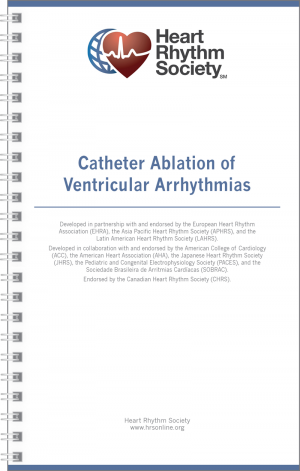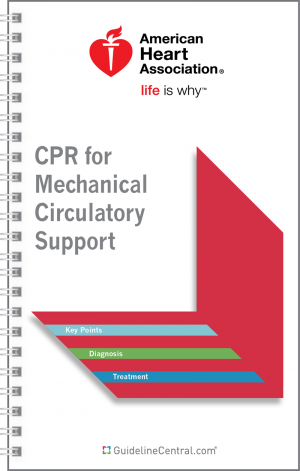Management of Patients with Atrial Fibrillation
- 132 pages
- Spiral Bound
- 80# Aqueous Coating
- 4.25" x 7.25"
- Ships in 5 – 10 business days
- Overview
- Top 10 Take-Home Messages for Atrial Fibrillation
- Introduction
- Management
- Figures and Algorithms
- Temporal Trends in Counts and Age-Standardized Rates of AF-Prevalent Cases by Social Demographic Index (SDI) Quintile for Both Sexes Combined, 1990 to 2017
- Prevalence of AF Among Medicare Beneficiaries, 1993–2007
- Age-Standardized Global Prevalence Rates of AF and Atrial Flutter (AFL) per 100,000, Both Sexes, 2020
- AF Stages: Evolution of Atrial Arrhythmia Progression
- Pillars for AF Management
- Types of Atrial Flutter and Macroreentrant Atrial Tachycardia
- Mechanisms and Pathways Leading to AF
- Contemporary Summary of the Role of the ANS in AF
- Rates of Stroke by Stroke Risk Score Levels in Different Cohorts
- Antithrombotic Options in Patients with AF
- DOAC Laboratory Monitoring
- Consideration of Oral Anticoagulation for Device-Detected AHREs According to Patient Stroke Risk by CHA2DS2-VASc Score and Episode Duration
- Active Bleeding Associated with Oral Anticoagulant
- Forms of ICH, Classified by Mechanism
- Flowchart: Management of Periprocedural Anticoagulation in Patients With AF
- Anticoagulation for Typical (CTI-Dependent) AFL
- Acute Rate Control in AF With Rapid Ventricular Response (RVR)
- AF Long-Term Rate Control
- Patient and Clinical Considerations for Choosing Between Rhythm Control and Rate Control
- Flowchart for Treatment Choices When Required to Decrease AF Burden
- Patients With Hemodynamically Stable AF Planned for Cardioversion
- Treatment Algorithm for Pharmacological Conversion of AF to Sinus Rhythm
- Treatment Algorithm for Drug Therapy for Maintenance of Sinus Rhythm
- Management of Patients with HF and AF
- Prevention of AF After Cardiac Surgery
- Treatment of AF After Cardiac Surgery
- Unadjusted Cumulative Risk of AF Recurrence
- Acute Medical or Surgical Illness
- Tables
- Risk Factors for Diagnosed AF
- Definitions
- Table of Publicly Available Decision Aids
- CHARGE-AF Risk Score for Detecting Incident AF
- C2HEST Risk Score for Detecting Incident AF
- Three Validated Risk Models for Stroke
- Some Best Known Published Clinical Scores With Potential Advantages
- Risk Factor Definitions for CHA2DS2-VASc Score as in the Original Article
- Factors That Increase the Risk of Stroke
- Thromboembolic Event Rates by Point Score for ATRIA, CHADS2, and CHA2DS2-VASc Risk Scores
- OACs Pharmacokinetic Characteristics and Dosing
- Situations in Which Long-Term Anticoagulation Is Contraindicated and Situations When It Remains Reasonable
- Reversal Agents for Oral Anticoagulants
- Bleeding Events (Precent/Year) in Direct Oral Anticoagulant Pivotal Clinical Trials
- Risk Factors for Thromboembolic Complications and Recurrent ICH
- Timing of Discontinuation of Oral Anticoagulants in Patients With AF Scheduled to Undergo an Invasive Procedure or Surgery in Whom Anticoagulation is to Be Interrupted
- Recommended Doses of Currently Approved DOACs According to Renal Function
- Clinical Presentations and Objectives of Heart Rate Control
- Pharmacological Agents for Rate Control in Patients With Atrial Fibrillation
- Drugs for Pharmacological Conversion of Atrial Fibrillation to Sinus Rhythm
- Specific Drug Therapy for Maintenance of Sinus Rhythm in Patients With Atrial FibrillationRecommended Monitoring for Patients Taking Oral Amiodarone
- Recommended Monitoring for Patients Taking Other Antiarrhythmic Drugs
- Complications After Atrial Fibrillation Catheter Ablation
- Anticoagulation Strategies During Pregnancy – Antenatal Options
- Medical Cancer Therapy Associated With Increased Risk of AF (>1%)
- Special Considerations for Anticoagulation in Patients With AF on Active Cancer Treatment
- For purchases under 100 in quantity, we suggest placing the order directly through the website.
- We offer group/institutional licenses for multi-user accounts (discount amount varies depending on the number of users).
- We are proud to offer special discounts to medical schools, training programs, students and more.
- We offer bulk purchase discounts based on number of copies and number of titles.
Contact Us for more details
Our mission is to build healthier lives, free of cardiovascular diseases and stroke. That single purpose drives all we do. AHA's Professional Membership is a made up of a robust group of cardiovascular professionals who participate in discovery and dissemination of science.
The Heart Rhythm Society (HRS) is a leading resource on cardiac pacing and electrophysiology. This specialty organization represents medical, allied health, and science professionals from more than 70 countries who specialize in cardiac rhythm disorders.
Description
This resource is for informational purposes only, intended as a quick-reference tool based on the cited source guideline(s), and should not be used as a substitute for the independent professional judgment of healthcare providers. Practice guidelines are unable to account for every individual variation among patients or take the place of clinician judgment, and the ultimate decision concerning the propriety of any course of conduct must be made by healthcare providers after consideration of each individual patient situation. Guideline Central does not endorse any specific guideline(s) or guideline recommendations and has not independently verified the accuracy hereof. Any use of this resource or any other Guideline Central resources is strictly voluntary.
You can also find this product included in these bundles!

- Coronary Artery Revascularization
- CPR for Mechanical Circulatory Support
- Device-Based Therapy
- Diagnosis and Management of Aortic Disease
- Diagnosis and Treatment of Patients with Hypertrophic Cardiomyopathy
- Early Management of Patients With Acute Ischemic Stroke
- Evaluation and Diagnosis of Chest Pain
- Evaluation and Management of Patients with Bradycardia and Cardiac Conduction Delay
- Evaluation and Management of Patients With Syncope
- Heart Failure
- Management of Adults with Congenital Heart Disease
- Management of Blood Cholesterol
- Management of Patients with Atrial Fibrillation
- Management of Patients with Chronic Coronary Disease
- Management of Patients With Ventricular Arrythmias and the Prevention of Sudden Cardiac Death
- Mechanical Circulatory Support
- Mechanical Circulatory Support — Ambulatory and Community Patient Care
- Non-ST-Elevation Acute Coronary Syndromes
- Perioperative Cardiovascular Evaluation and Management of Patients Undergoing Noncardiac Surgery
- Peripheral Artery Disease Lower Extremity
- Prevention Of Stroke In Nonvalvular Atrial Fibrillation
- Prevention of Stroke In Women
- Prevention, Detection, Evaluation, and Management of High Blood Pressure in Adults
- Primary Prevention of Cardiovascular Disease
- Primary Stroke Prevention
- ST-Elevation Myocardial Infarction (STEMI)
- Stable Ischemic Heart Disease
- Supraventricular Tachycardia
- Valvular Heart Disease

- Coronary Artery Revascularization
- Device-Based Therapy
- Diagnosis and Management of Aortic Disease
- Diagnosis and Treatment of Patients with Hypertrophic Cardiomyopathy
- Evaluation and Diagnosis of Chest Pain
- Evaluation and Management of Patients with Bradycardia and Cardiac Conduction Delay
- Evaluation and Management of Patients With Syncope
- Heart Failure
- Management of Adults with Congenital Heart Disease
- Management of Blood Cholesterol
- Management of Patients with Atrial Fibrillation
- Management of Patients with Chronic Coronary Disease
- Management of Patients With Ventricular Arrythmias and the Prevention of Sudden Cardiac Death
- Non-ST-Elevation Acute Coronary Syndromes
- Perioperative Cardiovascular Evaluation and Management of Patients Undergoing Noncardiac Surgery
- Peripheral Artery Disease Lower Extremity
- Prevention, Detection, Evaluation, and Management of High Blood Pressure in Adults
- Primary Prevention of Cardiovascular Disease
- ST-Elevation Myocardial Infarction (STEMI)
- Stable Ischemic Heart Disease
- Supraventricular Tachycardia
- Valvular Heart Disease

- Cardiac Physiologic Pacing for the Avoidance and Mitigation of Heart Failure
- Cardiovascular Implantable Electronic Device Lead Management and Extraction
- Catheter Ablation of Ventricular Arrhythmias
- Catheter and Surgical Ablation of Atrial Fibrillation
- Device-Based Therapy
- Diagnosis and Treatment of Patients with Hypertrophic Cardiomyopathy
- Evaluation and Management of Arrhythmic Risk in Neuromuscular Disorders
- Evaluation and Management of Patients with Bradycardia and Cardiac Conduction Delay
- Evaluation and Management of Patients With Syncope
- Evaluation, Risk Stratification, and Management of Arrhythmogenic Cardiomyopathy
- Magnetic Resonance Imaging and Radiation Exposure in Patients with Cardiovascular Implantable Electronic Devices
- Management of Patients with Atrial Fibrillation
- Management of Patients With Ventricular Arrythmias and the Prevention of Sudden Cardiac Death
- Practical Management of the Remote Device Clinic
- Supraventricular Tachycardia
Related Guidelines

Peripheral Artery Disease Lower Extremity

Diagnosis and Treatment of Patients with Hypertrophic Cardiomyopathy

Management of Patients with Chronic Coronary Disease

Cardiac Physiologic Pacing for the Avoidance and Mitigation of Heart Failure

Evaluation and Management of Arrhythmic Risk in Neuromuscular Disorders

Diagnosis and Management of Aortic Disease

Heart Failure

Coronary Artery Revascularization

Evaluation and Diagnosis of Chest Pain
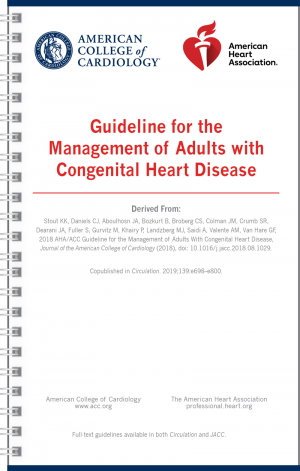
Management of Adults with Congenital Heart Disease
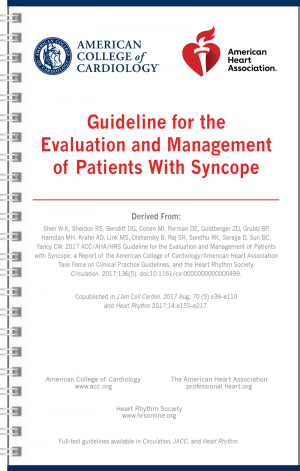
Evaluation and Management of Patients With Syncope

Evaluation and Management of Patients with Bradycardia and Cardiac Conduction Delay

Valvular Heart Disease

Early Management of Patients With Acute Ischemic Stroke

Primary Prevention of Cardiovascular Disease

Evaluation, Risk Stratification, and Management of Arrhythmogenic Cardiomyopathy

Management of Blood Cholesterol

Prevention, Detection, Evaluation, and Management of High Blood Pressure in Adults

Management of Patients With Ventricular Arrythmias and the Prevention of Sudden Cardiac Death
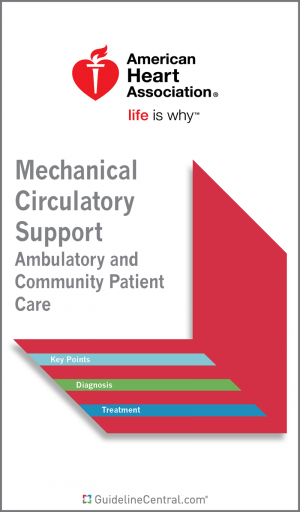
Mechanical Circulatory Support — Ambulatory and Community Patient Care

Cardiovascular Implantable Electronic Device Lead Management and Extraction
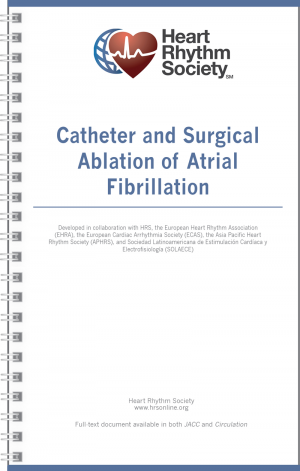
Catheter and Surgical Ablation of Atrial Fibrillation
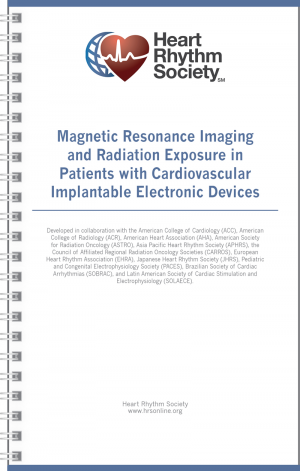
Magnetic Resonance Imaging and Radiation Exposure in Patients with Cardiovascular Implantable Electronic Devices

Supraventricular Tachycardia
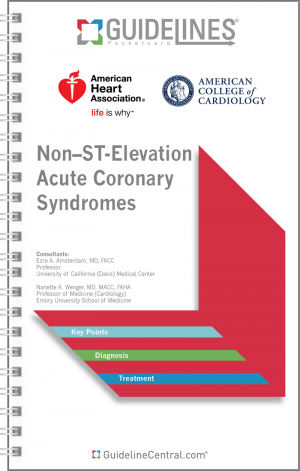
Non-ST-Elevation Acute Coronary Syndromes

Primary Stroke Prevention

Prevention of Stroke In Women
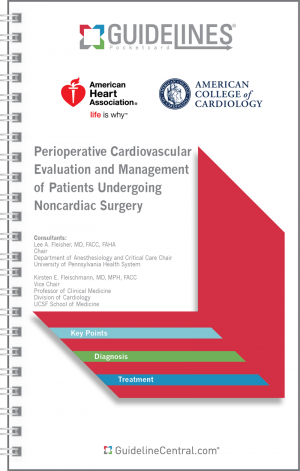
Perioperative Cardiovascular Evaluation and Management of Patients Undergoing Noncardiac Surgery

ST-Elevation Myocardial Infarction (STEMI)

Stable Ischemic Heart Disease

Prevention Of Stroke In Nonvalvular Atrial Fibrillation



